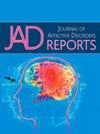Antepartum depression among women attending antenatal care in the third trimester in Conakry, Guinea: Findings from the MISPOD study
Q3 Psychology
引用次数: 0
Abstract
Depression in pregnancy (antepartum depression) is a common mental health condition associated with multiple adverse outcomes. Despite high prevalence in sub-Saharan African countries, there is a critical evidence gap on its prevalence in Guinea. We aimed to estimate the prevalence of symptoms suggestive of antepartum depression among women seeking antenatal care (ANC) in urban Guinea and to identify factors associated with it. As baseline of a longitudinal mixed methods study, we surveyed 417 pregnant women at ≥28 weeks gestation seeking ANC at 22 selected health facilities in Conakry and screened them using the Edinburgh Postnatal Depression Scale, with a score of 11 or higher indicating symptoms suggestive of depression. We used bivariate and multivariable logistic regression to identify factors associated with symptoms suggestive of antepartum depression. The prevalence of symptoms suggestive of antepartum depression was 34.5 % (95 % CI: 30.1–39.2). Women who worried 'sometimes' (aOR 3.10; 95 % CI: 1.83, 5.29) and 'very often' (aOR 5.69; 95 % CI: 2.72, 11.91) about feeding their family in the last weeks before the survey were more likely to have symptoms suggestive of antepartum depression than those who ‘never’ worried. Women who attended ANC at private health facilities were less likely to have symptoms suggestive of antepartum depression compared with those who attended ANC at public facilities (aOR 0.34; 95 % CI: 0.16, 0.69). The high prevalence of antepartum depressive symptoms in Conakry highlights the need to integrate mental health services into routine maternal healthcare and address socioeconomic determinants of perinatal mental health.
在几内亚科纳克里,在孕晚期接受产前护理的妇女的产前抑郁:来自MISPOD研究的发现
妊娠期抑郁(产前抑郁)是一种常见的心理健康状况,与多种不良后果相关。尽管撒哈拉以南非洲国家的流行率很高,但几内亚的流行率存在严重的证据差距。我们的目的是估计在几内亚城市寻求产前护理(ANC)的妇女中提示产前抑郁症状的患病率,并确定与之相关的因素。作为一项纵向混合方法研究的基线,我们调查了417名妊娠≥28周的孕妇,在科纳克里的22家选定的卫生机构寻求ANC,并使用爱丁堡产后抑郁量表对她们进行筛选,得分为11分或更高表明有抑郁症状。我们使用双变量和多变量logistic回归来确定与产前抑郁症状相关的因素。提示产前抑郁症状的患病率为34.5% %(95% % CI: 30.1-39.2)。“有时”担心的女性(aOR 3.10;95 % CI: 1.83, 5.29)和“非常经常”(aOR 5.69;95 % CI: 2.72, 11.91)在调查前最后几周担心家庭喂养的妇女比那些“从不”担心的妇女更有可能出现产前抑郁症的症状。与在公共机构接受产前护理的妇女相比,在私立医疗机构接受产前护理的妇女出现产前抑郁症状的可能性较小(aOR 0.34;95 % ci: 0.16, 0.69)。科纳克里产前抑郁症状的高发突出表明,需要将心理健康服务纳入常规孕产妇保健,并解决围产期心理健康的社会经济决定因素。
本文章由计算机程序翻译,如有差异,请以英文原文为准。
求助全文
约1分钟内获得全文
求助全文
来源期刊

Journal of Affective Disorders Reports
Psychology-Clinical Psychology
CiteScore
3.80
自引率
0.00%
发文量
137
审稿时长
134 days
 求助内容:
求助内容: 应助结果提醒方式:
应助结果提醒方式:


